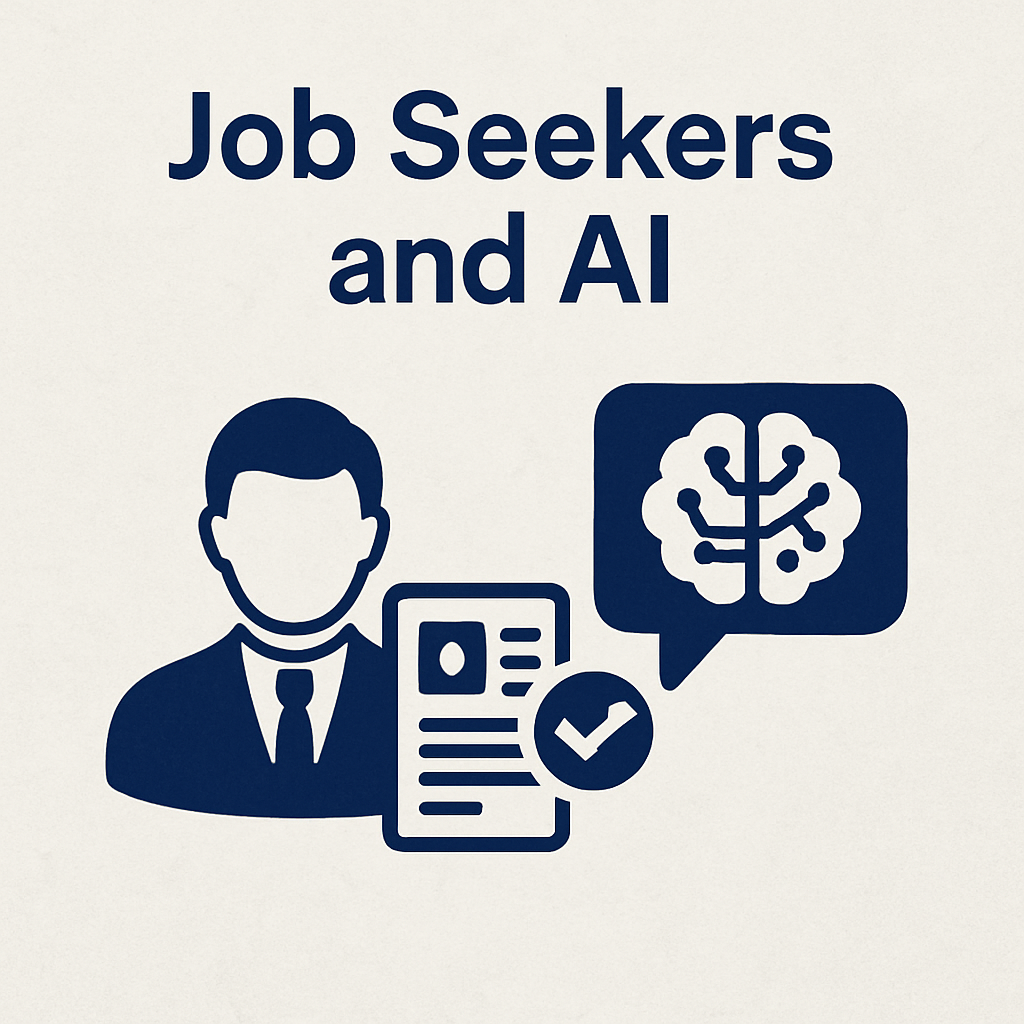A Fork in the Recruitment Road
The AI wave isn’t just cresting. It’s cutting straight through the centre of recruitment. We’re not talking about a little efficiency here and there – this is foundational change. From how candidates are screened to how interviews are run, AI is rewriting the playbook in real time.
And the ripple effects? They’re not just operational. They’re economic, strategic, and human.

Job Seekers: Learning to Dance with the Algorithm
For job seekers, the rules have shifted. AI now screens your CV, reads your cover letter, and might even be hosting your next interview via video (ref: Joy AI) – all before a human ever gets involved. In Australia, speech recognition errors in AI-based hiring tools can reach 22 percent for non-native speakers, raising serious concerns about fairness and bias. (news.com.au)
In the UK, entry-level roles have dropped by nearly a third in the past two years. Graduates are stepping into a job market that expects AI fluency just to stay visible, yet education isn’t evolving fast enough to keep pace with changing labour market requirements. (theguardian.com)
It’s no longer enough to polish a CV. You need to understand prompt engineering, AI etiquette, and how to showcase human qualities that don’t show up in an algorithmic scan.
In addition, we’re not far off the prospect of the application process finally evolving from a CV based process, which has existed since Leonardo da Vinci first created one back in 1482.
However, the evolution has the potential to remove important human interaction points which build engagement between job seeker and future employer. As AI recruitment tools also provide data banks of historic competency question responses candidates can play back to standardised questions on things like leadership, change management, performance step-change, etc.
Saving job seekers the need to repeat responses, and instead just submit their saved and pre-scored highlight reel in response to questions pre-determined between what the AI tool suggested based on the job spec, and hiring manager approved.
In-House Talent Teams: Scaling Faster, But at What Cost?
Across industries, talent teams are shifting from manual processes to fully AI-managed pipelines. That includes sourcing, screening, shortlisting and interviewing – at a scale that was unthinkable just a few years ago.
Companies like Unilever have processed 250,000 applications in weeks, saving 50,000 hours and cutting hiring time from four months to four weeks. (en.wikipedia.org)
But as McKinsey points out, while nearly all businesses are experimenting with AI, only around 1 percent consider themselves truly “AI mature.” (mckinsey.com) Which is unsurprising, because the ecosystem is evolving a such a pace.
The tech is fast. The challenge is leadership – how to scale ethically and strategically without losing sight of the human impact.
Recruitment Agencies: Shrinking Batting Averages, Evolving Value Propositions
As more companies bring AI hiring tools in-house, agency recruiters are feeling the squeeze. If a company can assess 5,000 candidates in 24 hours with its own AI, why outsource?
That said, not all doors are closing. There’s a growing opportunity to help smaller firms and startups navigate this landscape. Agencies that pivot toward education, tooling advice, or fairness audits may end up thriving – not just surviving.
A big challenge in practice for AI in recruitment has been diversity. There’s been numerous examples of early adopters having to go back to the drawing board because their automation tooling has demonstrated a significant bias against hiring women (Amazon), or Workday’s recent ruling for a class action to move forward because of alleged AI discrimination against over-40’s.
So, handing over the keys and letting it run at scale, could remain a recipe for further legal challenges until these kinks in the systems are worked out.
But one thing’s for sure, clients no longer need CV shufflers. They need strategic partners who understand how to compete in an AI-driven labour market.
The Bigger Economic Picture: Productivity Gains, Demand Risks
Here’s the contradiction business leaders can’t ignore. AI improves hiring speed, reduces cost, and increases consistency. But it also threatens to shrink consumer demand if implemented too aggressively.
Goldman Sachs estimates that 300 million full-time jobs globally are at risk of automation. (en.wikipedia.org) The World Economic Forum expects a net loss of 14 million jobs by 2030 when you factor in gains versus losses. (weforum.org)
If people lose jobs faster than we retrain or create new ones, we create a vacuum – not just of employment, but of spending. And when consumers stop spending, even the most efficient businesses find themselves without a market.
A Call for Humane Automation
AI isn’t just changing jobs. It’s changing the structure of entire industries. The New York Post recently reported predictions of a 15-year period of social disruption as AI continues to roll out without sufficient support systems. (nypost.com)
The takeaway? We need a hybrid mindset. Automate where it makes sense. But reinvest those savings into people – retraining, mobility programmes, and AI literacy. McKinsey and other researchers have shown that AI increases demand for resilience, digital skills, and ethical reasoning – the very things humans still do best. (arxiv.org)
Final Thought: Build the Future, Don’t Burn the Foundation
This isn’t just a story about better hiring systems. It’s a story about what kind of labour market we want to build – and who gets to participate in it.
AI will help companies move faster, hire smarter and reduce cost. But if we forget to design for sustainability, we risk building systems that are lean but lifeless.
The question for leaders isn’t “How do we use AI?” It’s “How do we grow our organisations without shrinking the world around them?”
Because no matter how efficient you get, if your customers are out of work – your business is out of runway.


